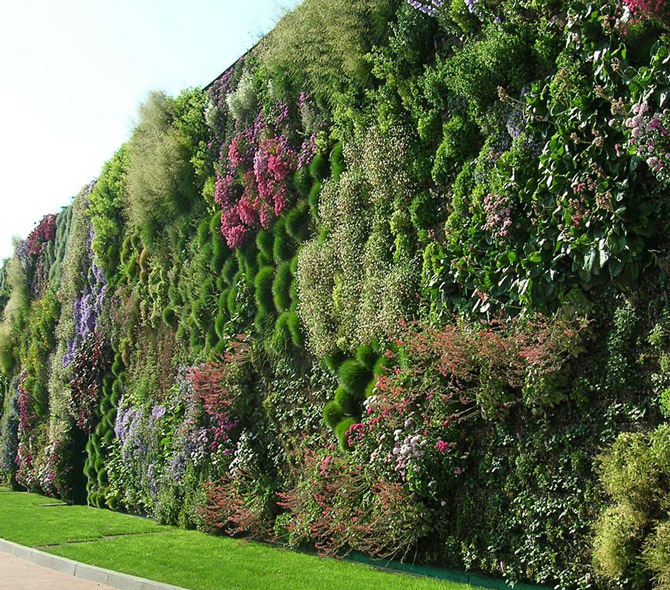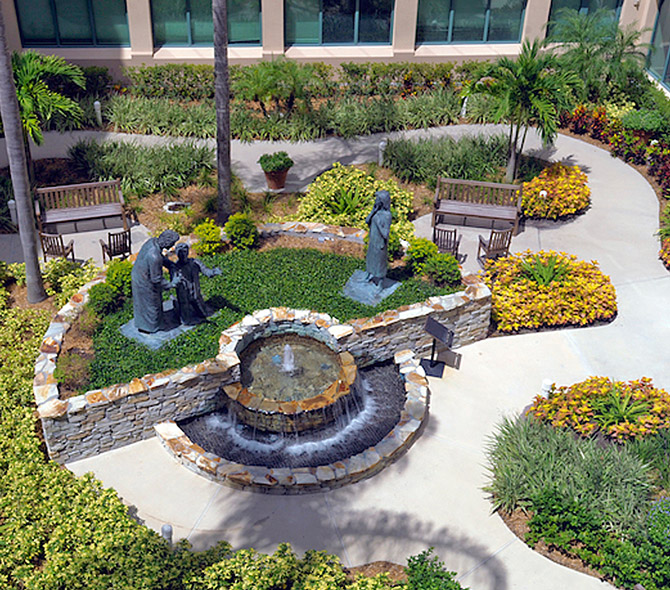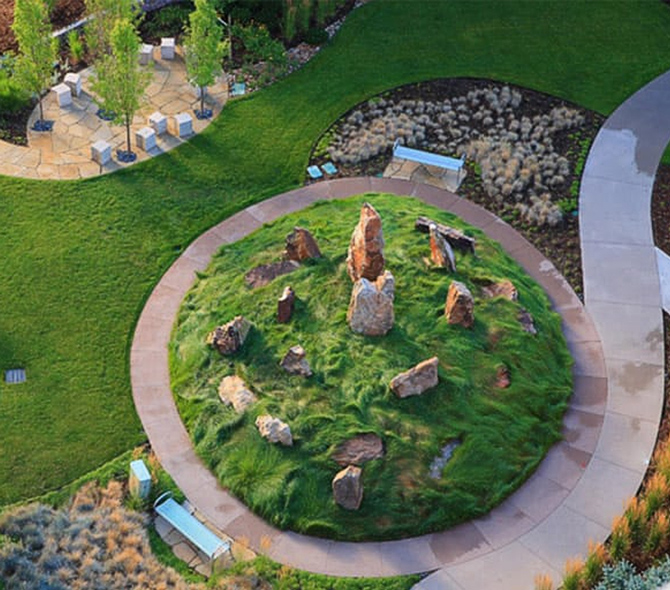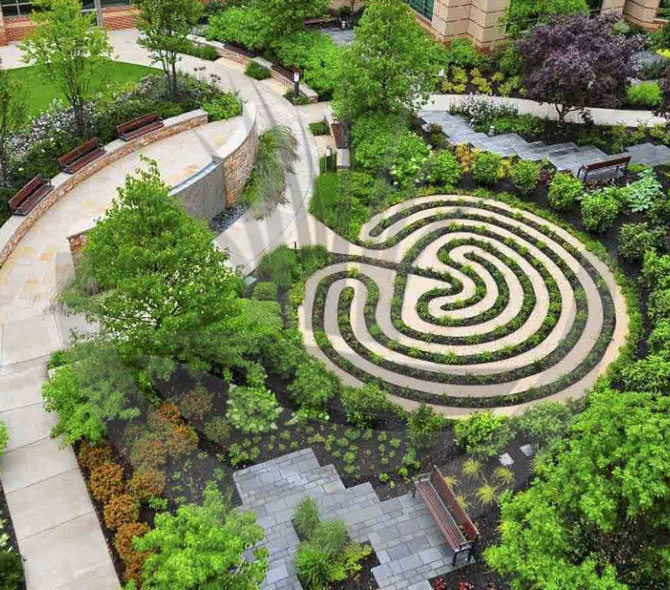
The creation of the healing gardens is used for spaces adjacent to healthcare facilities, offering numerous benefits to patients (such as those with Alzheimer's, cancer, or in simple rehabilitation) and helping them respond positively to treatments. For this reason, nothing can be left to chance and the design and implementation must be entrusted to one or more professionals who will take care of every detail. Given the complexity of creating these spaces, a series of simple tips have been collected below to help you create your own personal healing garden.
Here are some simple suggestions:
- - The sensory garden should be thought of as a space for interaction;
- - Think about who will use the garden and create a space suitable for all ages;
- - Create winding paths, which are more relaxing and encourage visitors to cross the garden in a calm and relaxing way;
- - Use flowers and plants of different colors, shapes, and characteristics, which will form the basis of these gardens;
- - Consider the space at your disposal to choose the best plant species;
- - Use vegetation to hide or mask visually unpleasant areas;
- - Use recycled elements to create creative furniture.
The five senses of the Garden
Hearing: the sound of birds, insects, the movement of bells, the rustling of the wind through leaves, the flowing of water over rocks evoke moods and elicit feelings of peace and relaxation.
- - Install ponds or fountains with water features to create movement and sound, while attracting birds and insects. Vegetation can also be added to the surface, such as: Nelumbo nucifera, Nymphaea spp.,Iris pseudacorus;
- - Use species that create pleasant sounds in the presence of wind: Betula pendula, Cornus florida ‘Rubra’, Korleuteria paniculata;
- - Use species that attract birds and provide them with food and shelter: Magnolia spp (tree), Rosa pimpinellifolia;
- - Install objects, such as bells, to create noise when the wind blows through them.
- - Use species with different textures to create contrasts, such as large fleshy leaves, velvety or hairy leaves, feathery ferns;
- - Avoid textures that are too rough or sharp;
- - Also pay attention to the bark of some trees, which can create an interesting tactile experience;
- - The recommended species are: Stachys lanata, Eryngium ametistinum, Abies concolor, Acer griseum;
- - Touch can also be stimulated through the feet; it is possible to create paths where visitors can take off their shoes and walk on materials with different consistencies, creating a strong psychological and physical benefit. This practice is called Barefooting.
- - Use scented species that extend their aroma. This encourages visitors to move around the space, stimulating the need to explore. It is also important to group plants together to create a mass effect: Philadelphus coronarius, Mahonia aquifolium, Lavandula angustifolia;
- - Use scented species that attract people when they are very close. These species should be placed near the building or in seating areas: Buddleia davidii, Pittosporum tobira; Hamamelis mollis;
- - Use scented species that need to be touched to emit their fragrance: Salvia officinalis, Mentha spicata, Rosmarinus officinalis.
- - Use plants known for their culinary properties: Salvia officinalis, Laurus nobilis, Nepeta musseni 'fassini';
- - Use plants that are known for their sweet content and distinct taste: Fruit trees, Rubus;
- - Plant species with edible fruits such as strawberries, cherries, and blackberries along the paths so that tasting is part of the garden visit;
- - Use plants with edible flowers such as nasturtiums and violets.
The creation of therapeutic or healing gardens is used for spaces adjacent to care facilities, offering numerous benefits to patients (such as those with Alzheimer's, cancer, or simply undergoing rehabilitation) and helping them respond positively to treatment. For this reason, nothing can be left to chance and the planning and construction must be entrusted to one or more professionals who will take care of every detail.
The Colors of the Garden
In sensory gardens, the use of colors is important as they evoke different meanings and sensations. Here are some examples:
- White: creates a feeling of purity and innocence and represents the entirety of earthly and spiritual life. It is the color of illumination as the absence of color. It has reflective properties: Cornus florida, Viburnum plicatum, Philadelphus coronarius;
- Yellow: used in lighter shades, it offers a sense of softness, peace, and reflection: Cornus florida, Viburnum plicatum, Philadelphus coronarius;
- Pink: a relaxing color used to refresh and rest the mind. In the garden, it is a neutral color that can be used as a welcoming and inviting color. It possesses the warm color of red, but at the same time remains pleasant and subtle: Kolkwitzia amabilis, Potentilla fruticosa, Anemone coronaria;
- Red: a warm color in shades that blend into orange and cool in those that tend towards blue. It tends to create excitement and energy: Amaryllis spp., Calycanthus floridus, Clerodendron speciosissimus, Hibiscus, Zinnia;
- Green: the unifying element of the garden. It adds order and balance to all colors.
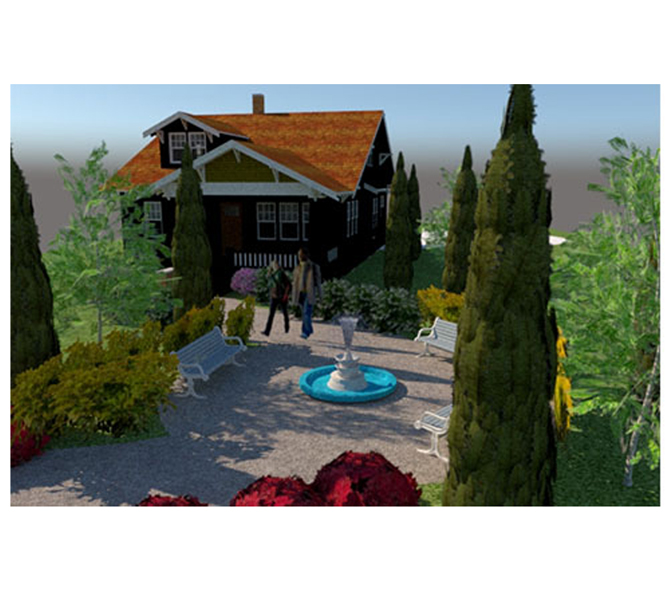
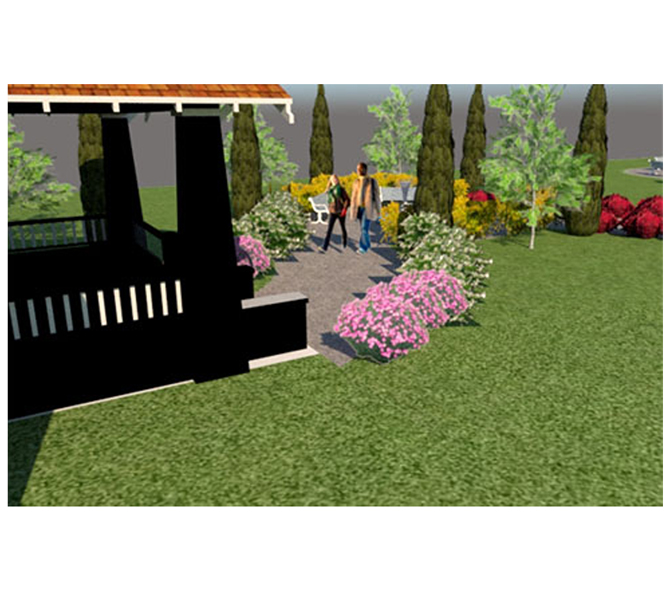
The five senses and colors are intertwined, so some species can be used to activate more than one sense.
Sight, for example, is activated by the combination of all species and their juxtapositions.
Example of a color path
A path for everyday life has been chosen. The winding path invites calm and relaxed walking and has therapeutic
significance for both the outward and return journeys.
Pink: Outward, welcomes the day and invites you to venture into the new day.
Return: refreshes and rests the mind from the day just passed.
White: Outward and Return, purifies the soul and mind.
Yellow: central space, with seating and a fountain with water that stimulates auditory sensations.
This space is dedicated to peace and reflection on the day's events.
Red: Outward, gives energy and charge to face the day. Return: releases excitement.
Green: organizes and balances all the juxtapositions in the garden.
The juxtapositions of these colors actively stimulate the sense of sight.
Small measures that can improve your mood and physical and psychological well-being
in facing the days that present themselves.


